How can we support new infrastructure to keep Scotland connected in the future without damaging important traces of our past? That’s a question we asked ourselves recently when we advised on a national energy development proposal.
At HES, we have a responsibility within our regulatory and advisory roles to enable high quality decision-making about changes to our historic environment. All our work relates to the climate and nature crises as outlined in our new statement, Pointing the Way to the Future. Read on for a particularly powerful case study!
Connecting islands
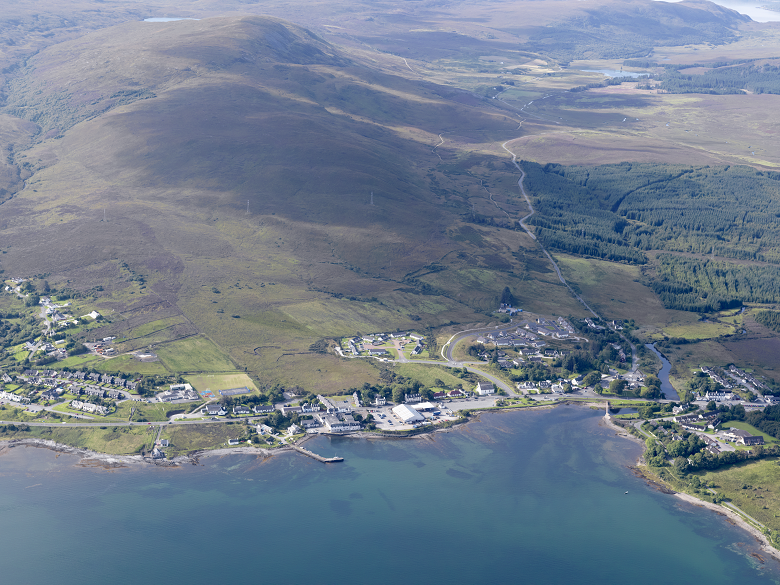
Broadford Bay on the Isle of Skye (© Crown Copyright HES)
We’ve been working closely with Scottish and Southern Electricity Networks (SSEN) to provide clear and expert advice to a project replacing the overhead power line (OHL) connecting Skye and the Western Isles with the mainland.
Surveys have found that the current OHL is deteriorating, leading to many power outages in the islands over the last three years. It’s forced communities to rely on large diesel generators for an electricity supply. The replacement is vital to improving the resilience of energy connection across rural areas, a crucial part of the just transition. It would also allow for the growing number of renewable energy projects to gain access to the networks.
Although the proposed development is a welcome step forward to reduce Scotland’s reliance on fossil fuels, it will impact on the historic environment. Many routes have been suggested for the new OHL, and we have worked hard to provide considered advice for all of these. It’s taken us to some amazing historic places including ancient burial grounds and the site of an an important battle.
The steep slopes of Glen Shiel
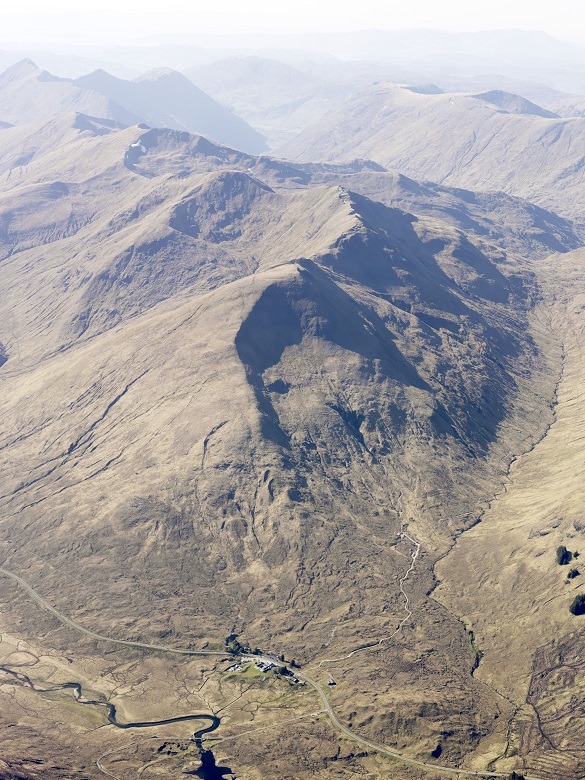
One of the proposed routes ran directly through the Battlefield of Glen Shiel. The Battle of Glenshiel is significant as the sole battle fought during the 1719 Jacobite Rising. The story of the fighting is well preserved within this largely untouched landscape and you can still see how Glen Shiel’s topography influenced events.
The Jacobite troops intially chose this spot as they thought it looked ideal for a Highland Charge, which had been used to great effect during the Battle of Killiecrankie 30 years earlier. Ultimately, the glen proved too steep, making Glenshiel the only battle of the 1688 to 1746 Risings where the Jacobites remained on the defensive. Many of the field fortifications remain intact. There’s even evidence of coehorn mortars that were used here by the British Army. The Spanish Hill is named after the Spanish troops who fought on the side of the Jacobites.
In our advice to SSEN, we emphasised that historic battlefields hold an important place in our national heritage and carry a deep cultural significance. As the characteristics of Glen Shiel play an important role in preserving the story of the battle, it’s important that it is protected. SSEN have taken our advice into account. They’re making it their priority to select a route that would avoid passing through Glen Shiel.
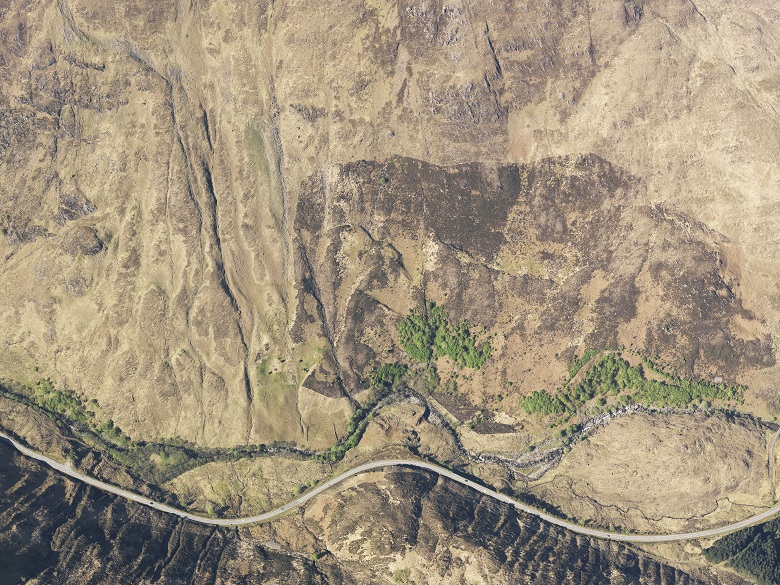
The development will aim to avoid Glen Shiel
An ancient burial ground
Another proposed route ran next to Old Corry, three prehistoric chambered cairns to the west of Broadford Bay, Skye. The cairns date from the Late Neolithic to the Bronze Age. They’re very close together, indicating a high number of burials within the area.
As with all prehistoric sites, the position of the cairns within their surrounding environment is important. Their location can tell us about how our ancient ancestors used and made connections with the land and nearby river. Unlike Glen Shiel, however, the current setting is already impacted by modern developments. The monuments are located within a commercial forestry clearing, with an existing OHL running to the east.
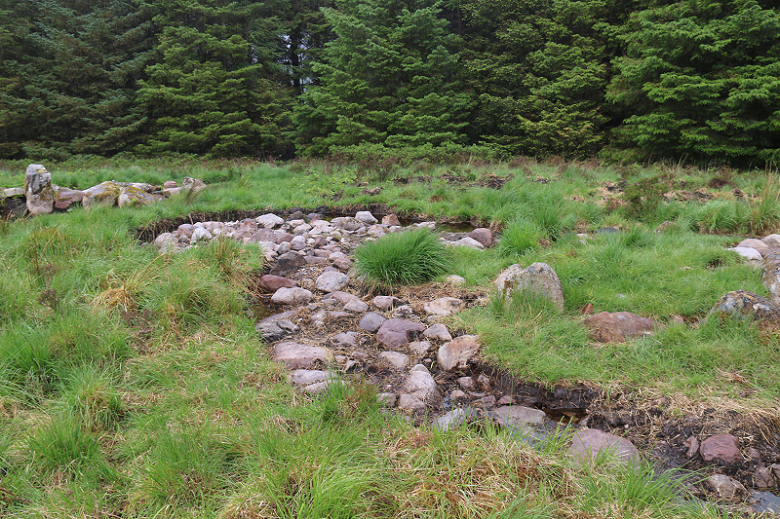
The prehistoric remains at Old Corry
The proposed route would remove the current OHL, with the replacement installed further away from the cairns. This change would not interfere with the site’s connection to the river, an important part of its setting. We’ve concluded that the resulting impacts would be no worse than the existing ones. It would not affect how we understand, appreciate, or experience the site.
To ensure they would be protected throughout the proposed development, we recommended that those taking part in the removal and installation of the OHLs are aware of the cairns and make sure that accidental damage is avoided. For more on the importance of setting, check out our dedicated guide.
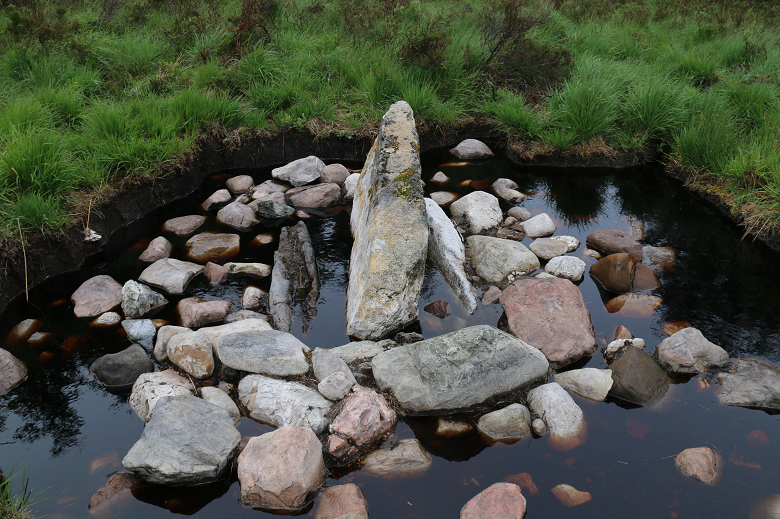
SSEN have been asked to be mindful of archaeological sites when working near Old Corry
The next steps
Our advice regarding Glen Shiel and Old Corry are just two examples of work that has gone into this project. SSEN have revised their proposal many times to reflect information they have received from us and other important stakeholders, such as NatureScot and members of local communities.
SSEN are awaiting a final decision from Scottish Ministers on the proposed development. Ministers will carefully consider all of the evidence submitted by the stakeholders to fully assess the impacts of the project.
A sustainable future
As well as ensuring projects like this one protect the past, we also need to look towards a sustainable future. The global climate and nature crises have introduced new challenges, and Scotland’s heritage is on the front line. We have a duty to make sure our historic environment plays a positive part in Scotland’s response to these emergencies.
The world is rapidly changing, and Scotland’s places will have to plan for sustainable development that meets the UN Sustainable Development Goals, helping us to make positive impacts on our communities, economy, and our environment for generations to come. It is crucial that responding to the global climate and nature crises is at the heart of this.
This will bring new challenges to managing change to our historic environment. We’ll continue to ensure that our historic environment is protected for future generations and supports sustainable development in Scotland.
Further reading…

We want to make sure that people understand the work we do and why we do it. You can find resources and publications on our website, plus there’s updates on social media and here on the blog.
- Our Regulatory Framework sets out how we provide our advise and services in a way that ensures our heritage is preserved and makes a positive difference to people’s lives, including our health, economy, culture, and environment
- We’re committed to managing change to our historic environment in a way that supports sustainable development. Read more in our new statement, Pointing the Way to the Future
- All of our work is underpinned by our Historic Environment Policy for Scotland
For another case study, you can head to the Borders! Find out how we helped give a historic mill a sustainable new lease of life.

